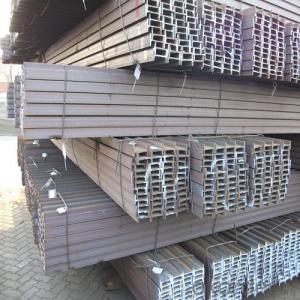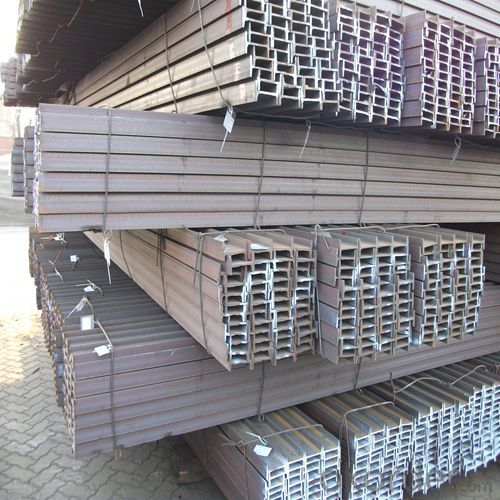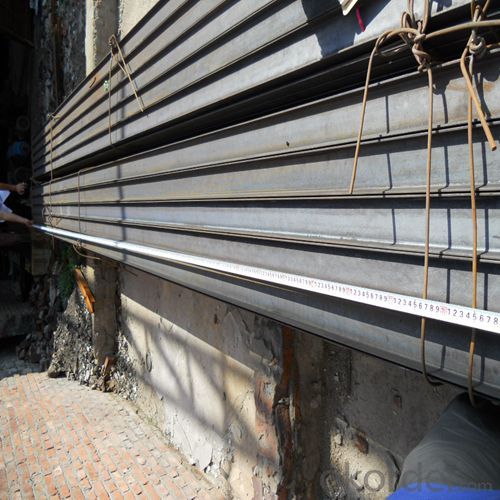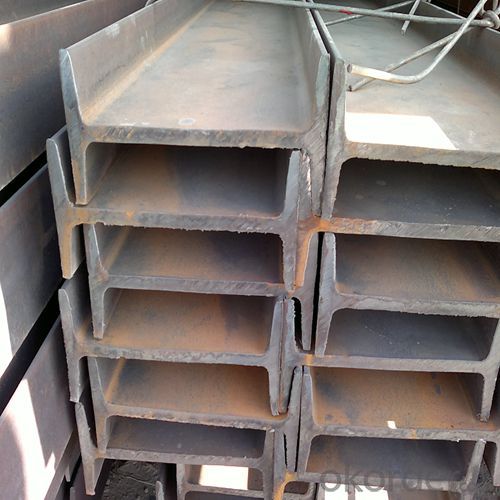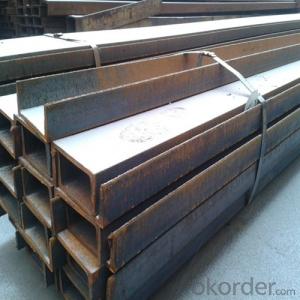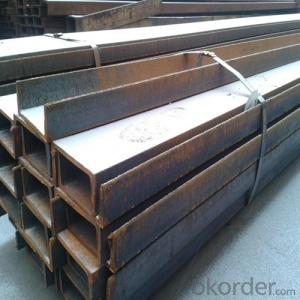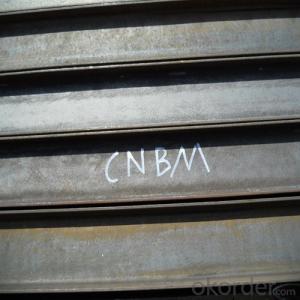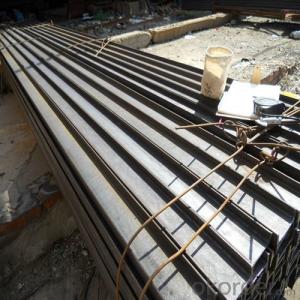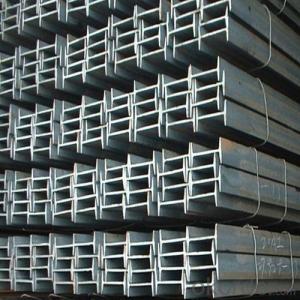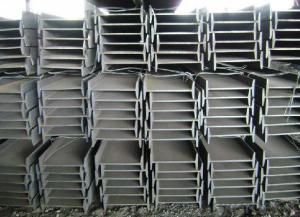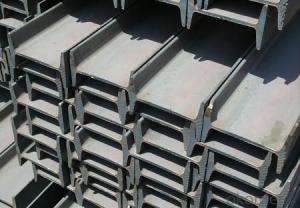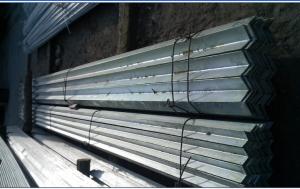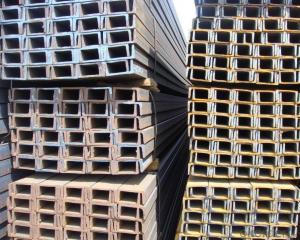Hot Rolled Steel I-Beam IPE IPEAA EN10025 S235JR
- Loading Port:
- Tianjin
- Payment Terms:
- TT or LC
- Min Order Qty:
- 50 m.t.
- Supply Capability:
- 30000 m.t./month
OKorder Service Pledge
OKorder Financial Service
You Might Also Like
Product Description:
OKorder is offeringHot Rolled Steel I-Beam IPE IPEAA EN10025 S235JR at great prices with worldwide shipping. Our supplier is a world-class manufacturer of steel, with our products utilized the world over. OKorder annually supplies products to European, North American and Asian markets. We provide quotations within 24 hours of receiving an inquiry and guarantee competitive prices.
Product Applications:
Hot Rolled Steel I-Beam IPE IPEAA EN10025 S235JR are ideal for structural applications and are widely used in the construction of buildings and bridges, and the manufacturing, petrochemical, and transportation industries.
Product Advantages:
OKorder's Hot Rolled Steel I-Beam IPE IPEAA EN10025 S235JR are durable, strong, and resist corrosion.
Main Product Features:
· Premium quality
· Prompt delivery & seaworthy packing (30 days after receiving deposit)
· Corrosion resistance
· Can be recycled and reused
· Mill test certification
· Professional Service
· Competitive pricing
Product Specifications:
Usage & Applications of Hot Rolled Steel H-beam For Sale
Commercial building structure ;Pre-engineered buildings; Machinery support structure; Prefabricated structure; Medium scale bridges; Ship-building structure.etc.
Packaging & Delivery of Hot Rolled Steel H-beam For Sale
1. Packing: it is nude packed in bundles by steel wire rod
2. Bundle weight: not more than 3.5MT for bulk vessel; less than 3 MT for container load
3. Marks:
Color marking: There will be color marking on both end of the bundle for the cargo delivered by bulk vessel. That makes it easily to distinguish at the destination port.
Tag mark: there will be tag mark tied up on the bundles. The information usually including supplier logo and name, product name, made in China, shipping marks and other information request by the customer.
If loading by container the marking is not needed, but we will prepare it as customer request.
4. Transportation: the goods are delivered by truck from mill to loading port, the maximum quantity can be loaded is around 40MTs by each truck. If the order quantity cannot reach the full truck loaded, the transportation cost per ton will be little higher than full load.
5. Delivered by container or bulk vessel
FAQ:
Q1: Why buy Materials & Equipment from OKorder.com?
A1: All products offered byOKorder.com are carefully selected from China's most reliable manufacturing enterprises. Through its ISO certifications, OKorder.com adheres to the highest standards and a commitment to supply chain safety and customer satisfaction.
Q2: How do we guarantee the quality of our products?
A2: We have established an advanced quality management system which conducts strict quality tests at every step, from raw materials to the final product. At the same time, we provide extensive follow-up service assurances as required.
Q3: How soon can we receive the product after purchase?
A3: Within three days of placing an order, we will begin production. The specific shipping date is dependent upon international and government factors, but is typically 7 to 10 workdays.
Q4: What makes stainless steel stainless?
A4: Stainless steel must contain at least 10.5 % chromium. It is this element that reacts with the oxygen in the air to form a complex chrome-oxide surface layer that is invisible but strong enough to prevent further oxygen from "staining" (rusting) the surface. Higher levels of chromium and the addition of other alloying elements such as nickel and molybdenum enhance this surface layer and improve the corrosion resistance of the stainless material.
Q5: Can stainless steel rust?
A5: Stainless does not "rust" as you think of regular steel rusting with a red oxide on the surface that flakes off. If you see red rust it is probably due to some iron particles that have contaminated the surface of the stainless steel and it is these iron particles that are rusting. Look at the source of the rusting and see if you can remove it from the surface.
Images:
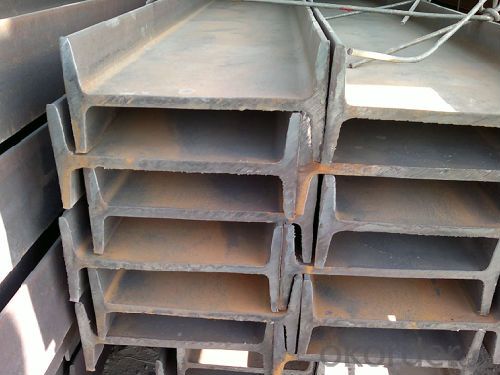
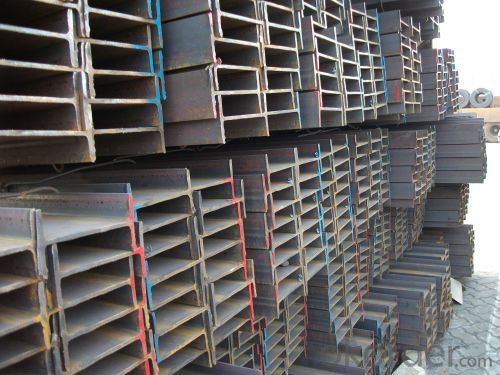
- Q: What are the different types of connections used for Steel I-Beams in bridge construction?
- There are several different types of connections that are commonly used for Steel I-Beams in bridge construction. Some of the most common types include: 1. Welded connections: This is the most common type of connection used in bridge construction. It involves welding the I-Beams together at the joints to create a strong and rigid connection. Welded connections are often preferred because they provide good load transfer and can withstand high forces. 2. Bolted connections: In this type of connection, the I-Beams are bolted together using high-strength bolts. Bolted connections allow for easy assembly and disassembly, making them ideal for situations where the bridge may need to be modified or relocated in the future. However, they may not provide as much rigidity as welded connections. 3. Riveted connections: Riveted connections were commonly used in the past but have become less common in modern bridge construction. This method involves using metal rivets to join the I-Beams together. While riveted connections can provide good load transfer, they require skilled labor and specialized equipment for installation. 4. Friction connections: Friction connections utilize high-strength bolts and special washers to create a connection that relies on the friction between the surfaces to transfer the load. This type of connection allows for some movement due to thermal expansion and contraction, making it suitable for long-span bridges where thermal effects can be significant. Each type of connection has its advantages and disadvantages, and the choice of connection type depends on various factors such as the design requirements, bridge location, anticipated loads, and construction methods. The selection of the appropriate connection type is crucial to ensure the structural integrity and longevity of the bridge.
- Q: How are steel I-beams inspected for quality control?
- Steel I-beams are inspected for quality control through a series of visual inspections, dimensional measurements, and non-destructive testing techniques. This may include checking for any visible defects, such as cracks, surface roughness, or uneven welds. Additionally, measurements are taken to ensure the beam's dimensions and tolerances are within the specified range. Non-destructive testing methods, such as ultrasonic testing or magnetic particle inspection, are also employed to detect any internal defects or discontinuities that may affect its structural integrity. Overall, a thorough inspection process is carried out to ensure that steel I-beams meet the required quality standards.
- Q: Can steel I-beams be used for swimming pool construction?
- Steel I-beams can be used in swimming pool construction, but it is not a common choice. Steel I-beams are typically used for structural support in buildings and bridges, and while they can provide a strong framework for a swimming pool, there are some factors to consider. Firstly, steel I-beams may require additional corrosion protection. Swimming pools are filled with water and chemicals, which can cause corrosion over time. Therefore, proper coating or protection measures should be taken to prevent rust and deterioration. Secondly, steel I-beams may not be as aesthetically pleasing as other materials commonly used in swimming pools, such as concrete or fiberglass. If aesthetics are an important factor, alternative construction materials might be more appropriate. Lastly, steel I-beams can be more expensive than other construction materials used in swimming pools. Depending on the project budget, it may be more cost-effective to choose a different material. In summary, while steel I-beams can be used for swimming pool construction, there are practical considerations to take into account such as corrosion protection, aesthetics, and budget.
- Q: Can steel I-beams be used in foundation or basement construction?
- Indeed, foundation or basement construction can incorporate steel I-beams. The utilization of steel I-beams is widespread in the construction industry, owing to their robustness and longevity. Particularly in regions where soil conditions are unstable or when substantial loads necessitate support, they can offer exceptional reinforcement for foundation or basement walls. Furthermore, steel I-beams possess resistance against rot, pests, and moisture, rendering them an optimal selection for basement construction. Nevertheless, it is vital to seek guidance from a structural engineer or construction expert to ascertain the suitable dimensions and positioning of the steel I-beams, taking into account the specific demands and circumstances of the building.
- Q: Are steel I-beams suitable for modular construction?
- Yes, steel I-beams are suitable for modular construction. Their structural properties make them an ideal choice for supporting heavy loads and spanning long distances in modular buildings. Steel I-beams have high strength-to-weight ratios, allowing for efficient use of materials without compromising structural integrity. They also provide excellent resistance to bending, which is crucial for ensuring the stability and longevity of modular structures. Additionally, steel I-beams are highly durable, fire-resistant, and can withstand extreme weather conditions, making them suitable for a variety of modular construction applications.
- Q: How are steel I-beams protected against rust and corrosion during storage?
- To prevent rust and corrosion during storage, steel I-beams are commonly safeguarded using various methods. One such method involves applying a protective coating, such as paint or galvanizing, which acts as a barrier between the steel and the environment. This barrier effectively hinders the formation of rust and corrosion by preventing direct contact between the metal surface and moisture or oxygen. When using paint as a protective coating, a layer of primer is typically applied first to improve adhesion and corrosion resistance. This is then followed by one or more layers of paint to provide additional protection. The choice of paint type and quality depends on factors such as the duration of storage and expected environmental conditions. Alternatively, galvanizing is widely employed to protect steel I-beams. This process involves coating the steel with a layer of zinc through hot-dip galvanizing or electroplating. Zinc acts as a sacrificial anode, corroding before the steel does. This sacrificial corrosion process effectively safeguards the steel against rust and corrosion. In addition to protective coatings, steel I-beams can be stored in controlled environments with reduced humidity levels or in specially designed storage facilities that minimize exposure to moisture and corrosive elements. Regular inspections and maintenance are essential to detect and address any signs of rust or corrosion that may occur despite these preventive measures. Overall, a combination of protective coatings, controlled environments, and proper maintenance practices ensures that steel I-beams remain free from rust and corrosion during storage.
- Q: Are there any limitations to the depth of steel I-beams?
- Yes, there are limitations to the depth of steel I-beams. The depth of an I-beam is typically limited by practical manufacturing constraints and the requirements of the specific application. As the depth increases, the weight and cost of the beam also increase. Additionally, there may be limitations based on the available space or height restrictions in the construction project. Ultimately, the depth of steel I-beams is determined by a combination of structural, economic, and practical considerations.
- Q: Can steel I-beams be used for educational institutions?
- Yes, steel I-beams can be used for educational institutions. Steel I-beams are commonly used in construction due to their strength, durability, and load-bearing capabilities. They provide structural support, especially in large buildings or areas with wide spans, making them suitable for educational institutions such as schools, colleges, and universities. Steel I-beams can be used in various applications within educational institutions. They are commonly used in the construction of gymnasiums, auditoriums, libraries, and other large spaces that require open floor plans and high ceilings. The strength of steel I-beams allows for the creation of large, open spaces without the need for excessive columns or support structures. In addition, steel I-beams can also be used in the construction of classrooms, laboratories, and other educational facilities. They provide the necessary structural support for the building while allowing for flexibility in the layout and design of the interior spaces. Steel I-beams can be easily integrated with other construction materials, such as concrete or wood, to create a safe and functional learning environment. Furthermore, steel I-beams offer several advantages for educational institutions. They are fire-resistant and can withstand extreme weather conditions, providing a safe and secure environment for students and staff. Steel is also a sustainable and environmentally friendly material, as it can be recycled and reused. This aligns with the increasing focus on sustainability and green building practices in educational institutions. Overall, steel I-beams are a viable option for the construction of educational institutions. Their strength, durability, and versatility make them suitable for a wide range of applications within these facilities.
- Q: Can steel I-beams be used for elevated storage racks or shelves?
- Yes, steel I-beams can be used for elevated storage racks or shelves. Steel I-beams are known for their strength and durability, making them an ideal choice for supporting heavy loads in elevated storage systems. They provide excellent structural support and can be customized to meet specific weight and size requirements, making them a reliable option for creating sturdy and efficient storage solutions.
- Q: How are steel I-beams protected against corrosion?
- Steel I-beams are protected against corrosion through various methods, such as galvanization, painting, or applying protective coatings. Galvanization involves coating the steel with a layer of zinc, which acts as a sacrificial barrier, preventing corrosion from reaching the steel. Painting involves applying a layer of paint that acts as a barrier against moisture and oxygen, preventing corrosion. Additionally, protective coatings can be applied to steel I-beams, which provide an extra layer of protection against corrosion. These methods help to prolong the lifespan and integrity of steel I-beams in various applications.
Send your message to us
Hot Rolled Steel I-Beam IPE IPEAA EN10025 S235JR
- Loading Port:
- Tianjin
- Payment Terms:
- TT or LC
- Min Order Qty:
- 50 m.t.
- Supply Capability:
- 30000 m.t./month
OKorder Service Pledge
OKorder Financial Service
Similar products
Hot products
Hot Searches
Related keywords
